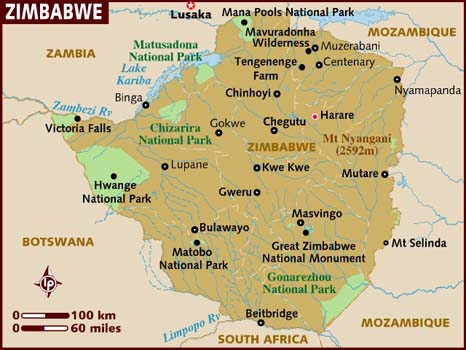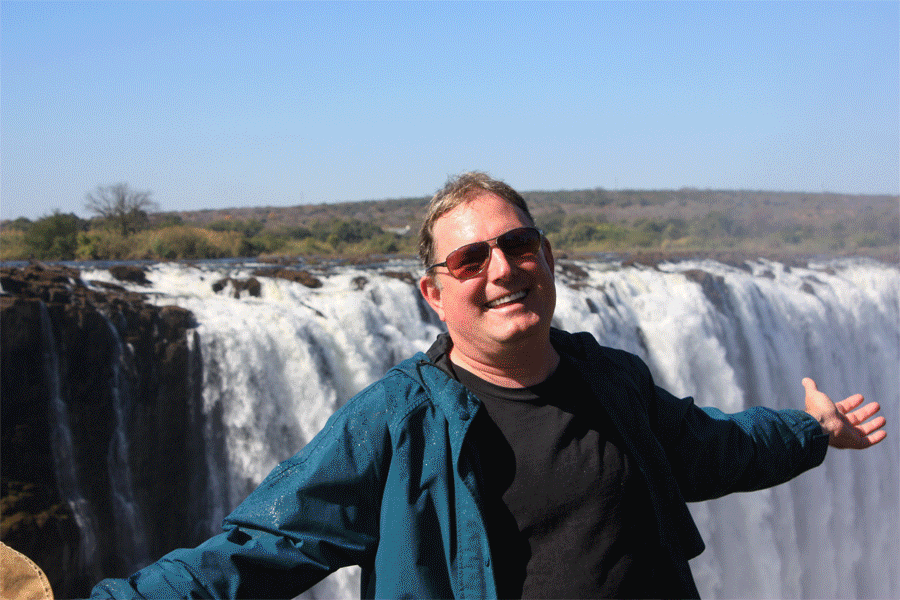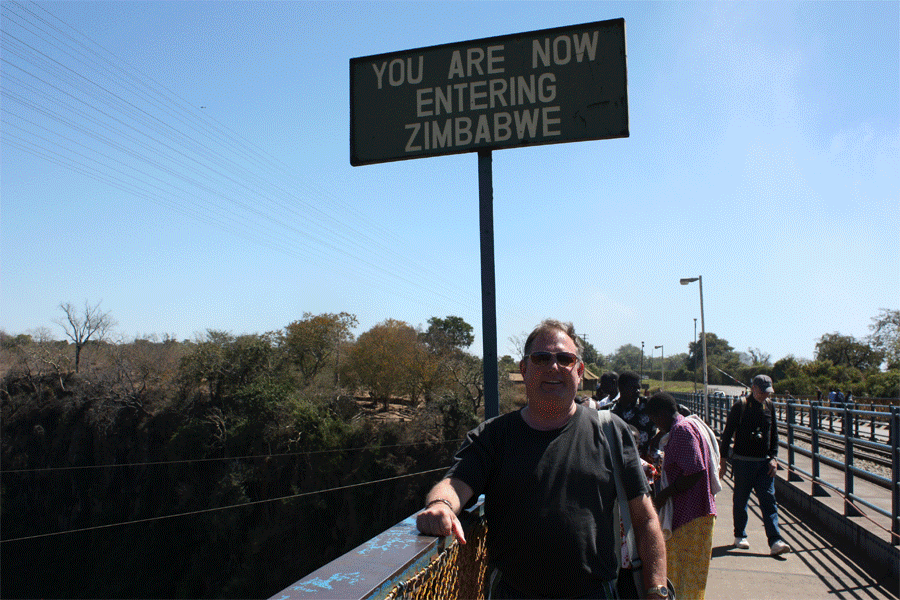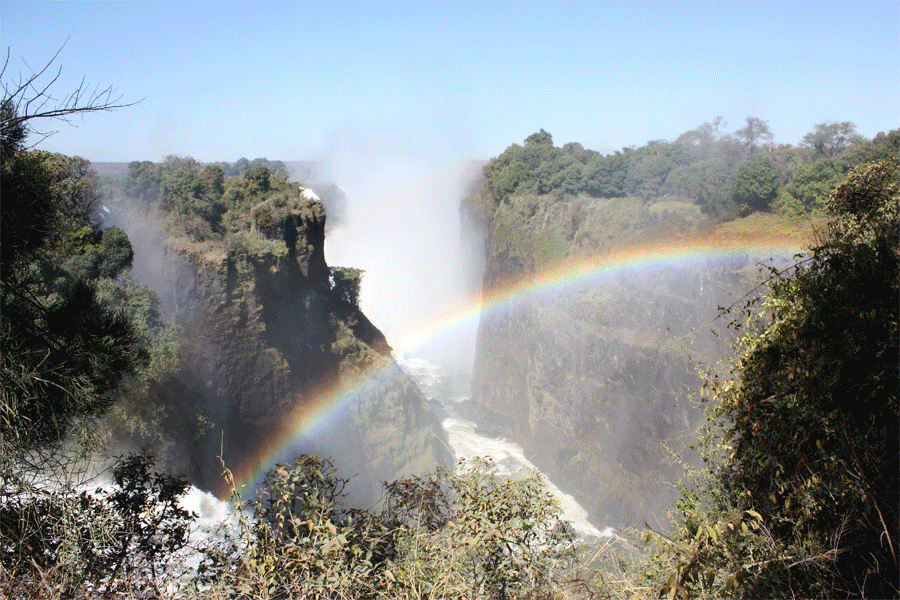 |
Zimbabwe got its name from the
great trading empire that existed in the area
during the 11th century. The original people in the area were a
Bush people known as the San and they are believed to have lived in the
area for more than 35,000 years. They were eventually pushed out of the
area by Bantu groups from south and central Africa. Today, the black
population of Zimbabwe is divided into two major language groups, which
are subdivided into several ethnic groups. The Mashona (Shona
speakers), who constitute about 75 percent of the population, have
lived in the area the longest and are the majority language group. The
Matabele (Sindebele speakers), representing about 20 percent of the
population and centered in the southwest around Bulawayo, arrived in
within the last 150 years. An offshoot of the South African Zulu group,
they maintained control over the Mashona until the white occupation of
Rhodesia in 1890. More than half of the whites, primarily of English
origin, arrived in Zimbabwe after World War II. Afrikaners from South
Africa and other European minorities, including Portuguese from
Mozambique, are also present. Until the mid-1970's, there were about
1,000 white immigrants per year, but from 1976 to 1985 a steady
emigration resulted in a loss of more than 150,000, leaving
approximately 100,000 in 1992. English,
the official language, is
spoken by the white population and understood, if not always used, by
more than half of the blacks. Persecution of white farmers in the 80's
and 90's have destroyed Zimbabwe's economy and rendered the countries
currently useless. Today, the country is still ruled by a ruthless,
election fixing dictator that refuses to relinquish power to help his
people.
|
 |

Images of Victoria Falls - Zimbabwe Side

Walking Across the border from Zambia to Zimbabwe and into the City of Victoria Falls

More of Victoria Falls from the Zimbabwe side of the border


